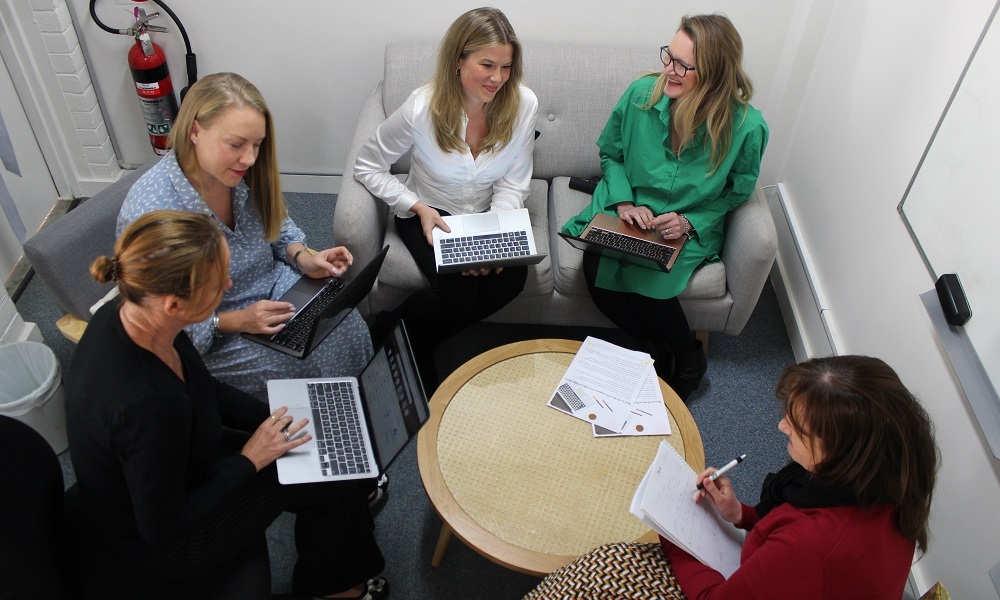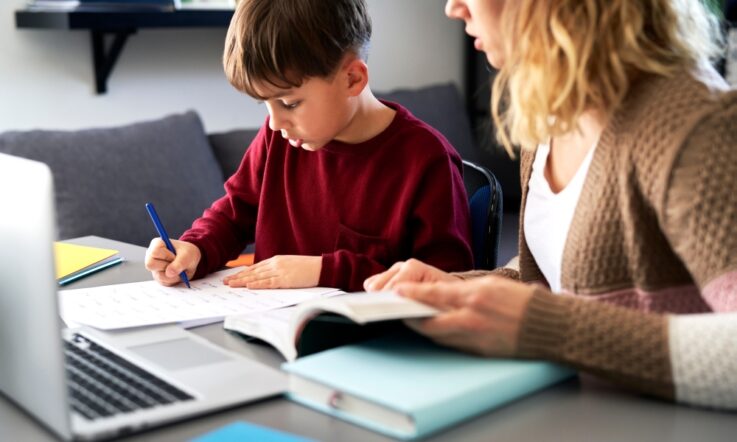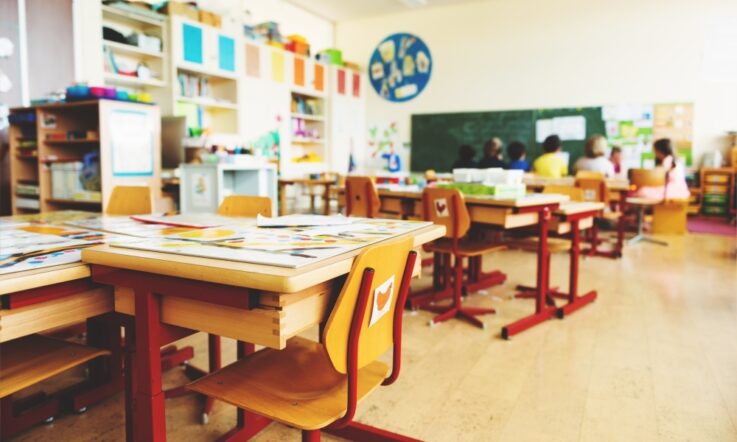Teacher; educator, carer, planner, information provider, role model, resourcer, assessor, mentor, counsellor, artist, coach, ‘friendship fire’ extinguisher, administrator, nurse, performer, gate keeper, learner, problem solver. As teachers, our many roles have always brought with them as many hurdles as heart-warming moments. Nonetheless, ensuring our students’ wellbeing is our greatest challenge of all.
A child’s social and emotional wellbeing is the largest determinant of their success and quality of life (Runions et al., 2021). It includes their personal characteristics, their emotional and behavioural regulation, and confidence and interpersonal skills. It encompasses their ability to maintain friendships and develop pro-social behaviours such as empathy, trust and cooperation.
‘Children with high social and emotional wellbeing are optimistic, confident and engaged’ (Save The Children 2020). The opposite is also true; children with low social and emotional wellbeing are disengaged, actively or passively (Hancock 2015). We also know that social and emotional wellbeing is both personal and environmental; it can be strengthened by effective support and interventions (AIHW, 2012).
As the 2022 school year began, I was acutely aware of the ‘below the surface’ learning needs and social challenges that my students would likely bring with them on Day 1 of Term 1. The various waves of the COVID-19 pandemic have transformed the nature of student needs. Among them, social isolation, a decrease in student wellbeing and ‘learning loss’ (Flack et al., 2020). Children themselves have named wellbeing as a significant concern and parents have reported ‘negative mental health impacts on their children’ (Save the Children 2020).
Ultimately, our job is to provide individualised support to the students in our classroom by meeting individual needs. Often, this means ideating solutions to the academic, behavioural, social and emotional problems they face. Given the diversity and complexity of student needs, it must not be left up to just one person in a school community to meet them. We must also ‘resist the quick fix’ when responding to the decrease in student wellbeing that the pandemic has catalysed (Quinn 2021).
A team-based approach to whole-school wellbeing
The Australian Independent Schools Association recently conducted a literature review which compared different approaches to wellbeing in schools over the past decade. It found that a team-based approach to whole-school wellbeing, with a ‘targeted component’ for specific vulnerable students is most effective (Runions et al., 2021).
I am lucky to work in a small school, in which teachers are collaborative and communicative about how best to nurture our students. In our school, classroom teachers care deeply for their students and often spend hours before and after the school day discussing student needs with parents, school leaders and psychologists, writing emails, filling out referrals and seeking advice and strategies for specific students. Oftentimes there are conversations happening in classrooms, over half-eaten lunches, even in the bathrooms. Students of concern are nominated in staff notes and mentioned during staff meetings. Overall, a huge amount of time is spent identifying and advocating for the wellbeing of our students.
What was missing from our existing process, however, was scheduled time to combine our expertise and strategise together, for the purposes of prevention and intervention.
Launching a Needs Protocol pilot
As a participant in the Harvard Graduate School of Education’s Certificate of School Management and Leadership, I studied the ‘Needs Protocol’ that Zach Elementary School in Colorado implemented through the leadership of their principal, Aisha Thomas (Thomas, A., 2022). Whilst the school was generally high performing, Thomas worked to create a moral imperative for their school to meet the aspirations of every child (Thomas, A., 2022). To address strategic gaps and individual needs at her school, Thomas introduced the innovation of a Needs Protocol, an opportunity for teachers to harness collaborative expertise for students of concern.
Needs Protocols are systematised, efficient team meetings in which everyone’s attention is focused on a specific student of concern and strategies to support their academic, social or emotional growth (Thomas, A., 2022). Through this framework, team members can share information, ask questions and customise solutions.
Our Head of Wellbeing and I designed and launched a Needs Protocol pilot as part of a PDSA (‘Plan, Do, Study, Act’) Cycle (Langley et al., 2009). This iterative cycle tests an innovation by planning it, enacting it, observing the outcomes and acting on feedback. Each classroom teacher was asked to attend a 20-minute session during Week 5 of Term 1. They were asked to nominate 3 students of most concern in advance. Teachers then met with an eclectic array of school-based stakeholders: our Head of Wellbeing, Head of Teaching and Learning, Head of Learning Support and School Psychologist, to ascertain the following:
- What are the concerns for this student?
- What are the desired long-term outcomes and goals? and;
- What ongoing action steps or communication is recommended? (Including a review date if applicable)
Dialogue was two-way and student specific. Student behaviour was discussed, but team members focused on coming up with plans to manage it. Learning support specialists ensured that students were part of specific literacy or numeracy interventions and suggested further programs. School leaders gained the qualitative data necessary to develop student-centred, whole-school wellbeing initiatives. Our school psychologist provided talk strategies for teachers to help a student to challenge and reframe unhelpful thinking patterns. Having all of these experts in one room is as much common sense as it is innovation.
From pilot to implementation
Grossman (2022) cautions that due to the exploratory nature of innovating, success can be uneven at first. This substantiates how important it was for us to begin with a pilot project and to apply the ‘study’ element of the PDSA cycle, before implementing it to ensure the protocol’s future success.
The timing of our first protocol allowed teachers to make informed, yet proactive decisions about students of concern early in the school year. This paves the way for ongoing, effective support before bigger problems arise. One teacher reported, ‘it saved me a lot of time because I didn’t need to contact all the different people individually.’ Our Head of Wellbeing expressed, ‘The Needs Protocol allowed school leaders to gain a deeper understanding of the needs in our school through an efficient, “speedboat” process.’ Another teacher said of the process, ‘having a range of knowledgeable and qualified staff in one room was very beneficial. Whilst more follow-up is required it is a big step in the right direction.’
The Nadler-Tushman Congruence Model names 5 building blocks which must be aligned to support an innovation’s success. These are: structures and systems; culture; capabilities; critical tasks and interdependencies; and leadership (Tushman et al., 2002).
Looking ahead
Moving forward, we will scaffold each meeting according to goals, based on student data. Additionally, adjusted scheduling of our future Needs Protocols is required to ensure the inclusion of veteran and former teachers. Perhaps the most neglected experts on individual students’ needs are those who have taught them in the past.
The timing of our parent-teacher interviews also needs to align with our Needs Protocol, so that solutions can be discussed and communicated with parents, to ensure proactive parental engagement. The protocol requires further administrative structures to ensure tracking and follow up.
A key ingredient in a school’s wellbeing is that of its staff (Runions et al., 2021). It is widely reported among teachers that cooperative and skilled colleagues are one of the most valuable forms of support they can receive (Thomas, 2022). Ultimately, our pilot has shown the potential of a Needs Protocol to respond to the COVID-19 pandemic. It has transformed the way we meet the needs of our students and staff, particularly in a post-pandemic landscape. As teachers, we perform myriad roles, but we do not need to, nor should we try to perform them alone.
References
AIHW (Australian Institute of Health and Welfare) (2012). Social and emotional wellbeing: development of a children’s headline indicator. Canberra: AIHW. https://www.aihw.gov.au/reports/children-youth/social-emotional-wellbeing-development-of-chi/summary
Flack, C. B., Walker, L., Bickerstaff, A., Earle, H., & Margetts, C. (2020). Educator perspectives on the impact of COVID-19 on teaching and learning in Australia and New Zealand. Pivot Professional Learning. https://inventorium.com.au/wp-content/uploads/2020/09/Pivot-Professional-Learning_State-of-Education-Whitepaper_April2020.pdf
Grossman, A. (2022, February 3). Week 1: Foundational Steps of School Leadership [Lecture]. Leading Strategy and Innovation, Harvard Business School Online.
Hancock, K.J. & Zubrick, S.R. (2015). Children and young people at risk of disengagement from school. Commissioner for Children and Young People. Western Australia. June 2015 (Updated October 2015). https://www.researchgate.net/profile/Kirsten-Hancock-2/publication/281257513_Children_and_young_people_at_risk_of_disengagement_from_school_literature_review/links/55dd3b4108ae83e420ee62bc/Children-and-young-people-at-risk-of-disengagement-from-school-literature-review.pdf
Kerford, D. (Host). (2019, June 19). Helping Children Build Friendship Skills [Podcast]. In Language of Friendship.
Langley, G. J., Moen, R. D., Nolan, K. M., Nolan, T. W., Norman, C. L., & Provost, L. P. (2009). The Improvement Guide: A Practical Approach to Enhancing Organizational Performance (2nd ed.). Jossey-Bass.
Quinn, J., Gardner, M., Drummy, M. & Fullan, M. (2021). New Pedagogies for Deep Learning: A Global Partnership. Activate Deep Learning and Lift from Loss. https://bettereducate.com/uploads/file/48309_ActivateDeepLearningandLiftfromLoss1pdf_ActivateDeepLearningandLiftfromLoss1.pdf
Runions, K.C., Pearce, N., & Cross, D. (2021). How Can Schools Support Whole-school Wellbeing? A Review of the Research. Report prepared for the Association of Independent Schools of New South Wales. https://www.aisnsw.edu.au/Resources/WAL%204%20%5BOpen%20Access%5D/AISNSW%20Wellbeing%20Literature%20Review.pdf
Save the Children. (2020). Build Back Better: Student Wellbeing, Engagement and Recovery in Australia. https://www.savethechildren.org.au/getmedia/8af84232-1faa-41a0-a455-eb9645327b0a/stc01744-policy-brief-student-wellbeing,-engagement-and-recovery-fa.pdf.aspx
Thomas, A.. (2022, February 3). Week 1: Foundational Steps of School Leadership [Lecture]. Leading Strategy and Innovation, Harvard Business School Online.
Tushman, Michael L. & Charles A. O’Reilly III. (2002). Winning through Innovation: A Practical Guide to Leading Organizational Change and Renewal. Harvard Business School Press.
Bridget Garing says, ‘As the 2022 school year began, I was acutely aware of the “below the surface” learning needs and social challenges that my students would likely bring with them on Day 1 of Term 1’.
Reflect on the school year so far. What challenges have your students faced, and how have you worked to support them? Did you enlist the advice and expertise of your colleagues?



